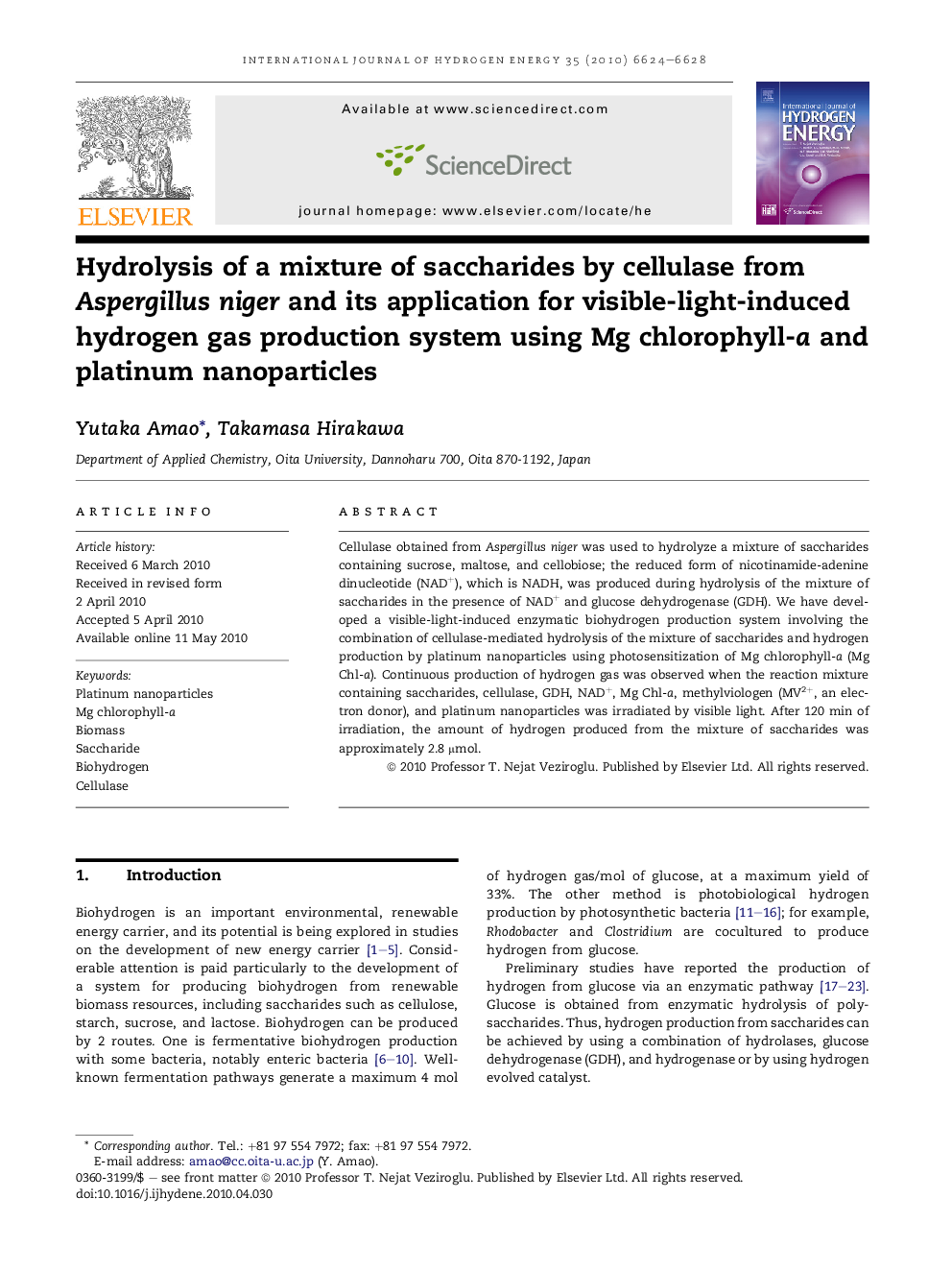| Article ID | Journal | Published Year | Pages | File Type |
|---|---|---|---|---|
| 1272897 | International Journal of Hydrogen Energy | 2010 | 5 Pages |
Cellulase obtained from Aspergillus niger was used to hydrolyze a mixture of saccharides containing sucrose, maltose, and cellobiose; the reduced form of nicotinamide-adenine dinucleotide (NAD+), which is NADH, was produced during hydrolysis of the mixture of saccharides in the presence of NAD+ and glucose dehydrogenase (GDH). We have developed a visible-light-induced enzymatic biohydrogen production system involving the combination of cellulase-mediated hydrolysis of the mixture of saccharides and hydrogen production by platinum nanoparticles using photosensitization of Mg chlorophyll-a (Mg Chl-a). Continuous production of hydrogen gas was observed when the reaction mixture containing saccharides, cellulase, GDH, NAD+, Mg Chl-a, methylviologen (MV2+, an electron donor), and platinum nanoparticles was irradiated by visible light. After 120 min of irradiation, the amount of hydrogen produced from the mixture of saccharides was approximately 2.8 μmol.
